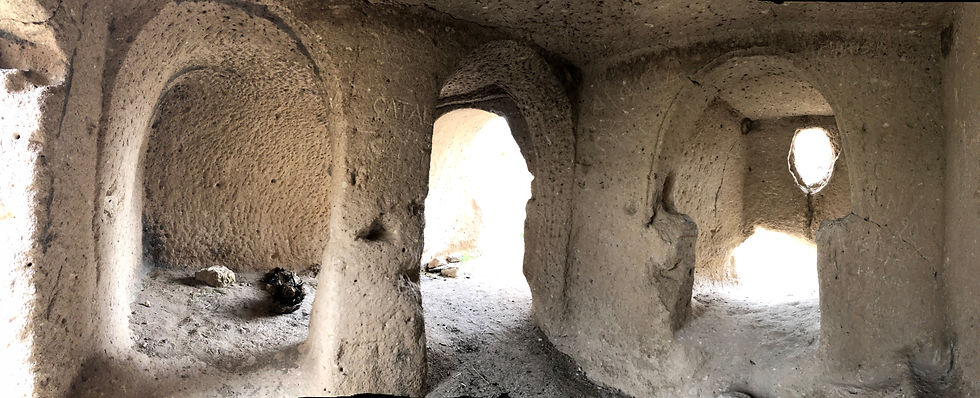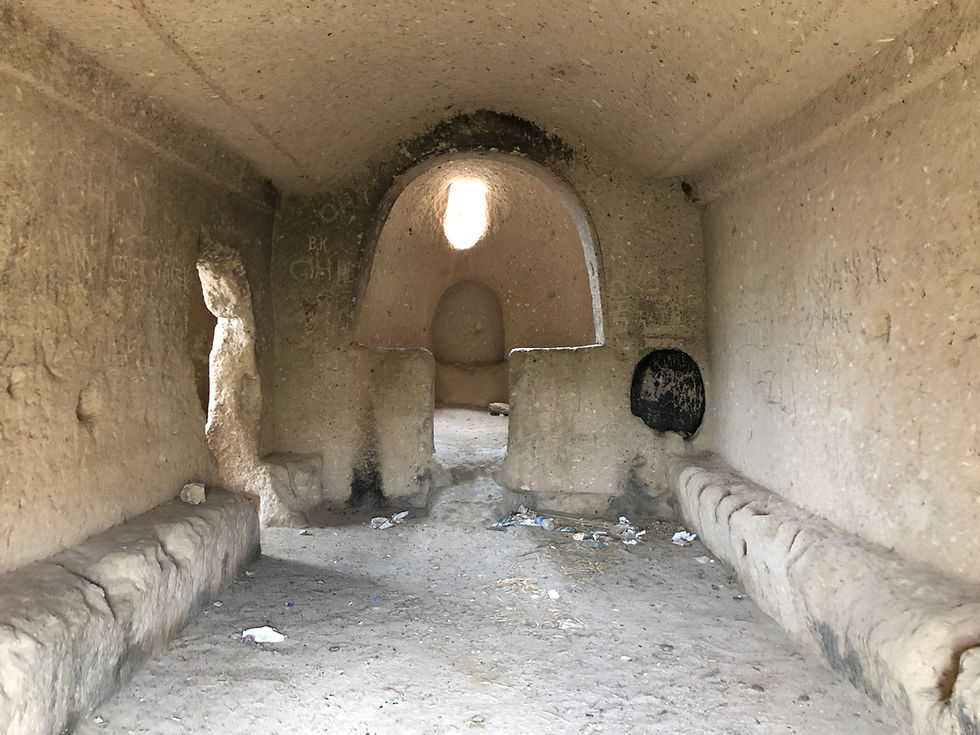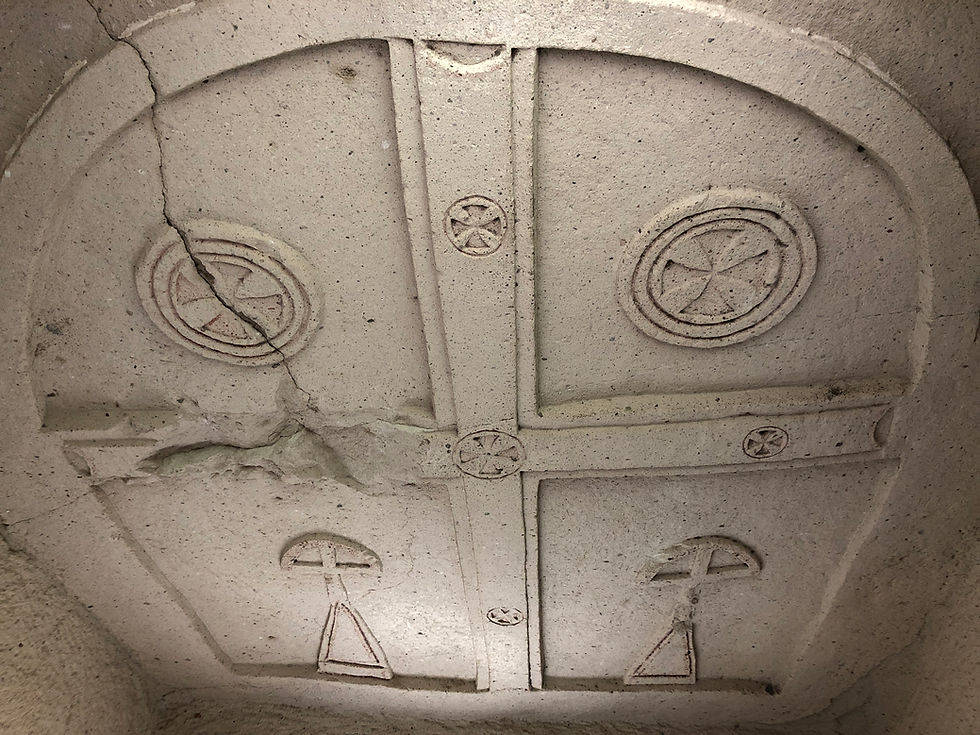Zelve Church 7
- Jason Borges
- Jun 11, 2020
- 2 min read
Zelve Churches 7a and 7b are two single-nave churches with side chapels. Because of their deteriorated condition, they are rarely studied or visited. The contemporary churches were carved into the base of isolated cones that stand next to the road from Zelve to Avanos, here on Google Maps. These churches, along with Churches 1 and 1b on the opposite side, stand guard at the mouth of the Zelve Valley. Cave churches also functioned as symbolic boundary markers at Selime. Zelve Church 7a has an arched porch that faces the road. The elongated nave includes benches on both sides. A shallow barrel vault covers the nave. The corbel/cantilever (flat strips on the ceiling) make the vault even more narrow. The east wall has a low south niche and a mushroom-shaped opening formed by the triumphal arch and standing chancel screen. Raised two steps, the sanctuary has two semi-circular corner seats and a central arched seat below the upper window.

The doorway breaking through the north bench connects to a small chapel that was annexed later. The overall shape of the nave and apse imitate that of the main church, including the shallow barrel vault cantilevered out from the wall. Yet, the scale is obviously smaller, and builders relocated the bench to the back (west) wall. The small nave once contained paintings on plaster and an encircled Maltese cross (back wall).
Zelve Church 7b stands in a separate cone behind (east) Church 7a. As in other Zelve churches, an arched porch proceeds the square entrance. A flat ceiling covers the rectangular nave with a side bench. On the east wall, a wide entrance passes through a shortened templon barrier and molded arch. The arched apse has a flat back wall. The apses of some Cappadocian churches do flatten toward the back, but never in such a pronounced fashion.

A second nave connects to the north through two arches. The horseshoe-shaped apse eroded away after the framed arch with inposts. This smaller aisle appears posterior and unfinished. Its wall markings stand out, especially compared to the smooth walls in the south nave.




Comments